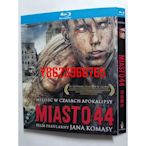搜尋結果
 $11000【屏東新精品】CE-B76-04(G306) 華沙2.5尺一抽衣櫥(不含上櫃及其他商品) 桃園到屏東市滿三千搭配車趟免運新精品家具/屏東分館
$11000【屏東新精品】CE-B76-04(G306) 華沙2.5尺一抽衣櫥(不含上櫃及其他商品) 桃園到屏東市滿三千搭配車趟免運新精品家具/屏東分館 $280BD藍光歐美電影《浴血華沙Miasto 》2014年波瀾歷史戰爭愛情片 超高清1080P藍光光碟 BD盒裝中陽影音
$280BD藍光歐美電影《浴血華沙Miasto 》2014年波瀾歷史戰爭愛情片 超高清1080P藍光光碟 BD盒裝中陽影音 $888888【尚品傢俱-崇德店】HY-A106-04 華沙2.5尺一抽衣櫥 / 上櫃*尚品傢俱-崇德店*
$888888【尚品傢俱-崇德店】HY-A106-04 華沙2.5尺一抽衣櫥 / 上櫃*尚品傢俱-崇德店* $717汽車模型 1/43 波蘭華沙 FSO SYRENA LAMINAT 1967 合金汽車模型接單中 【有幸遇見】
$717汽車模型 1/43 波蘭華沙 FSO SYRENA LAMINAT 1967 合金汽車模型接單中 【有幸遇見】![【國際中文版111】阿丁瑟爾:華沙協奏曲 / 拉赫曼尼諾夫:第3號鋼琴協奏曲CD,正版全新 【國際中文版111】阿丁瑟爾:華沙協奏曲 / 拉赫曼尼諾夫:第3號鋼琴協奏曲CD,正版全新]() $188【國際中文版111】阿丁瑟爾:華沙協奏曲 / 拉赫曼尼諾夫:第3號鋼琴協奏曲CD,正版全新齊柏林唱片行 62955075
$188【國際中文版111】阿丁瑟爾:華沙協奏曲 / 拉赫曼尼諾夫:第3號鋼琴協奏曲CD,正版全新齊柏林唱片行 62955075![【HB106-01】華沙7.5尺組合高衣櫥 【HB106-01】華沙7.5尺組合高衣櫥]() $46200【HB106-01】華沙7.5尺組合高衣櫥品築家具
$46200【HB106-01】華沙7.5尺組合高衣櫥品築家具![143 華沙 WAZAWA 201 KOMBI 旅行版合金經典 143 華沙 WAZAWA 201 KOMBI 旅行版合金經典]() $1269143 華沙 WAZAWA 201 KOMBI 旅行版合金經典百貨優選(599免運)
$1269143 華沙 WAZAWA 201 KOMBI 旅行版合金經典百貨優選(599免運)![史提芬葛瑞波利-華沙爵士現場-限量首批版DVD-免費加贈納京高-永誌難忘情歌集CD-全新未拆-金革 史提芬葛瑞波利-華沙爵士現場-限量首批版DVD-免費加贈納京高-永誌難忘情歌集CD-全新未拆-金革]() $270史提芬葛瑞波利-華沙爵士現場-限量首批版DVD-免費加贈納京高-永誌難忘情歌集CD-全新未拆-金革信箱paul600510@yahoo.com.tw
$270史提芬葛瑞波利-華沙爵士現場-限量首批版DVD-免費加贈納京高-永誌難忘情歌集CD-全新未拆-金革信箱paul600510@yahoo.com.tw![【X+Y】艾克斯居家生活館 現代衣櫃系列-華沙 2.5尺衣櫥上櫃.衣櫃.臺灣製造環保木心板.摩登家具 【X+Y】艾克斯居家生活館 現代衣櫃系列-華沙 2.5尺衣櫥上櫃.衣櫃.臺灣製造環保木心板.摩登家具]() $4000【X+Y】艾克斯居家生活館 現代衣櫃系列-華沙 2.5尺衣櫥上櫃.衣櫃.臺灣製造環保木心板.摩登家具艾克斯居家生活館二館
$4000【X+Y】艾克斯居家生活館 現代衣櫃系列-華沙 2.5尺衣櫥上櫃.衣櫃.臺灣製造環保木心板.摩登家具艾克斯居家生活館二館![全新原975年波蘭100茲羅提華沙市政廳建成 全新原975年波蘭100茲羅提華沙市政廳建成]() $1170全新原975年波蘭100茲羅提華沙市政廳建成福源齋
$1170全新原975年波蘭100茲羅提華沙市政廳建成福源齋![【HB106-04】華沙2.5尺一抽衣櫥 【HB106-04】華沙2.5尺一抽衣櫥]() $10900【HB106-04】華沙2.5尺一抽衣櫥品築家具
$10900【HB106-04】華沙2.5尺一抽衣櫥品築家具![《娜富米家具》{詢問就打折殺很大}SJR-607-2 華沙2.5尺雙吊衣櫥~ 10300元(還沒打折) 《娜富米家具》{詢問就打折殺很大}SJR-607-2 華沙2.5尺雙吊衣櫥~ 10300元(還沒打折)]() $10300《娜富米家具》{詢問就打折殺很大}SJR-607-2 華沙2.5尺雙吊衣櫥~ 10300元(還沒打折)娜富米家具/可刷卡
$10300《娜富米家具》{詢問就打折殺很大}SJR-607-2 華沙2.5尺雙吊衣櫥~ 10300元(還沒打折)娜富米家具/可刷卡
The city's symbol is the mermaid placed in the capital's coat of arms. There are three mermaid monuments in Warsaw: one on the banks of the Vistula, the second on the Old Town Square, and the third in Praga-Południe. The oldest monument in Warsaw is the Sigismund's Column.
700,000 expelled from the city [7] The Warsaw Uprising (Polish: powstanie warszawskie; German: Warschauer Aufstand), sometimes referred to as the August Uprising (Polish: powstanie sierpniowe), [15] was a major World War II operation by the Polish underground resistance to liberate Warsaw from German occupation.
Plot. On 1 September 1939, Germany invades Poland, after which a regulation was promulgated that all Polish Jews should move to the new Warsaw Ghetto. As in all the ghettos, a Judenrat was appointed and was responsible for the administration of the ghetto.
- Background
- Uprising
- Casualties
- Aftermath
- Opposing Forces
- In Popular Culture
- See Also
- External Links
In 1939, German authorities began to concentrate Poland's population of over three million Jews into a number of extremely crowded ghettos located in large Polish cities. The largest of these, the Warsaw Ghetto, collected approximately 300,000–400,000 people into a densely packed, 3.3 km2 area of Warsaw. Thousands of Jews were killed by rampant dis...
January revolt
On 18 January 1943, the Germans began their second deportation of the Jews, which led to the first instance of armed insurgency within the ghetto. While Jewish families hid in their so-called "bunkers", fighters of the ŻOB and ŻZW, resisted, engaging the Germans in direct clashes. Though the ŻZW and ŻOB suffered heavy losses (including some of their leaders), the Germans also took casualties, and the deportation was halted within a few days. About 1,200 Jews were killed, and about 5,000 depor...
Preparations
The ŻZW and ŻOB, built dozens of fighting posts and executed a number of Nazi collaborators, including Jewish Ghetto Police officers, members of the fake (German-sponsored and controlled) resistance organization Żagiew, as well as Gestapo and Abwehr agents (including the alleged agent and Judenrat associate Alfred Nossig, executed on 22 February 1943). The ŻOB established a prison to hold and execute traitors and collaborators. Józef Szeryński, former head of the Jewish Ghetto Police, committ...
Main revolt
On 19 April 1943, on the eve of Passover, the police and SS auxiliary forces entered the ghetto. They were planning to complete the deportation action within three days, but were ambushed by Jewish insurgents firing and tossing Molotov cocktails and hand grenades from alleyways, sewers, and windows. The Germans suffered 59 casualties and their advance bogged down. Two of their combat vehicles (an armed conversion of a French-made Lorraine 37L light armored vehicle and an armored car) were set...
13,000 Jews were killed in the ghetto during the uprising (some 6,000 among them were burnt alive or died from smoke inhalation). Of the remaining 50,000 residents, almost all were captured and shipped to the death camps of Majdanek and Treblinka. Jürgen Stroop's internal SS daily report for Friedrich Krüger, written on 16 May 1943, stated: Accordi...
After the uprising was over, most of the incinerated houses were razed, and the Warsaw concentration camp complex was established in their place. Thousands of people died in the camp or were executed in the ruins of the ghetto. The SS hunted Jews hiding in the ruins. On 19 April 1943, the first day of the most significant period of the resistance, ...
Jewish
Two Jewish underground organisations fought in the Warsaw Uprising: the left wing ŻOB founded in July 1942 by Zionist Jewish youth groups within the Warsaw Ghetto; and the right wing ŻZW, or Jewish Military Union, a national organization founded in 1939 by former Polish military officers of Jewish background which had strong ties to the Polish Home Army and cells in almost every major town across Poland. However, both organisations were officially incorporated into the Polish Home Army and it...
Polish
Due to the nature of the conflict and that it took place within the confines of German-guarded Ghetto, the role of the Polish Home Army was primarily one of ancillary support; namely, the provision of arms, ammunition and training. However, according to Marian Fuks, the Ghetto uprising would not have been possible without assistance from the Polish Resistance. Before the uprising started, the most important aid from the Polish resistance to the Jewish resistance took part of weapon smuggling...
German
Ultimately, the efforts of the Jewish resistance fighters proved insufficient against the German occupation system. According to Hanna Krall, the German task force dispatched to put down the revolt and complete the deportation action numbered 2,090 men armed with a number of minethrowers and other light and medium artillery pieces, several armored vehicles, and more than 200 machine and submachine guns. Its backbone consisted of 821 Waffen-SS paramilitary soldiers from five SS Panzergrenadier...
The uprising is the subject of numerous works, in multiple media, such as Aleksander Ford's film Border Street (1948), John Hersey's novel The Wall (1950), Leon Uris' novel Mila 18 (1961), Jack P. Eisner's autobiography The Survivor (1980), Andrzej Wajda's films A Generation (1955), Samson (1961), Holy Week (1995), and Jon Avnet's film Uprising(200...
Voices From the Inferno: Holocaust Survivors Describe the Last Months in the Warsaw Ghetto, an online exhibition by Yad VashemMarek Edelman, The Warsaw Ghetto UprisingKrzyża (in Polish) Church façade (center), 2021. The Church of the Holy Cross (Polish: Bazylika Świętego Krzyża) is a Roman Catholic house of worship in Warsaw, Poland. Located on Krakowskie Przedmieście opposite the main Warsaw University campus, it is one of the most notable Baroque churches in Poland's capital.
Council for Mutual Economic Assistance. The Warsaw Pact (WP), [d] formally the Treaty of Friendship, Cooperation and Mutual Assistance (TFCMA), [e] was a collective defense treaty signed in Warsaw, Poland, between the Soviet Union and seven other Eastern Bloc socialist republics of Central and Eastern Europe in May 1955, during the Cold War.
Field Cathedral of the Polish Army. The cathedral is currently the central church of the Polish Army and all major religious feasts related to the Polish armed forces are held there. The front façade is marked by a large tympanum pointed by a sculpture depicting the Holy Mary and sided by two low towers.
華沙 相關
廣告過去一個月已有 超過 100 萬 位使用者造訪過 booking.com
地表最強訂房網-Booking.com,超多住宿選擇等你來! 全球上百萬間住宿供您選擇,多數客房免費取消





































